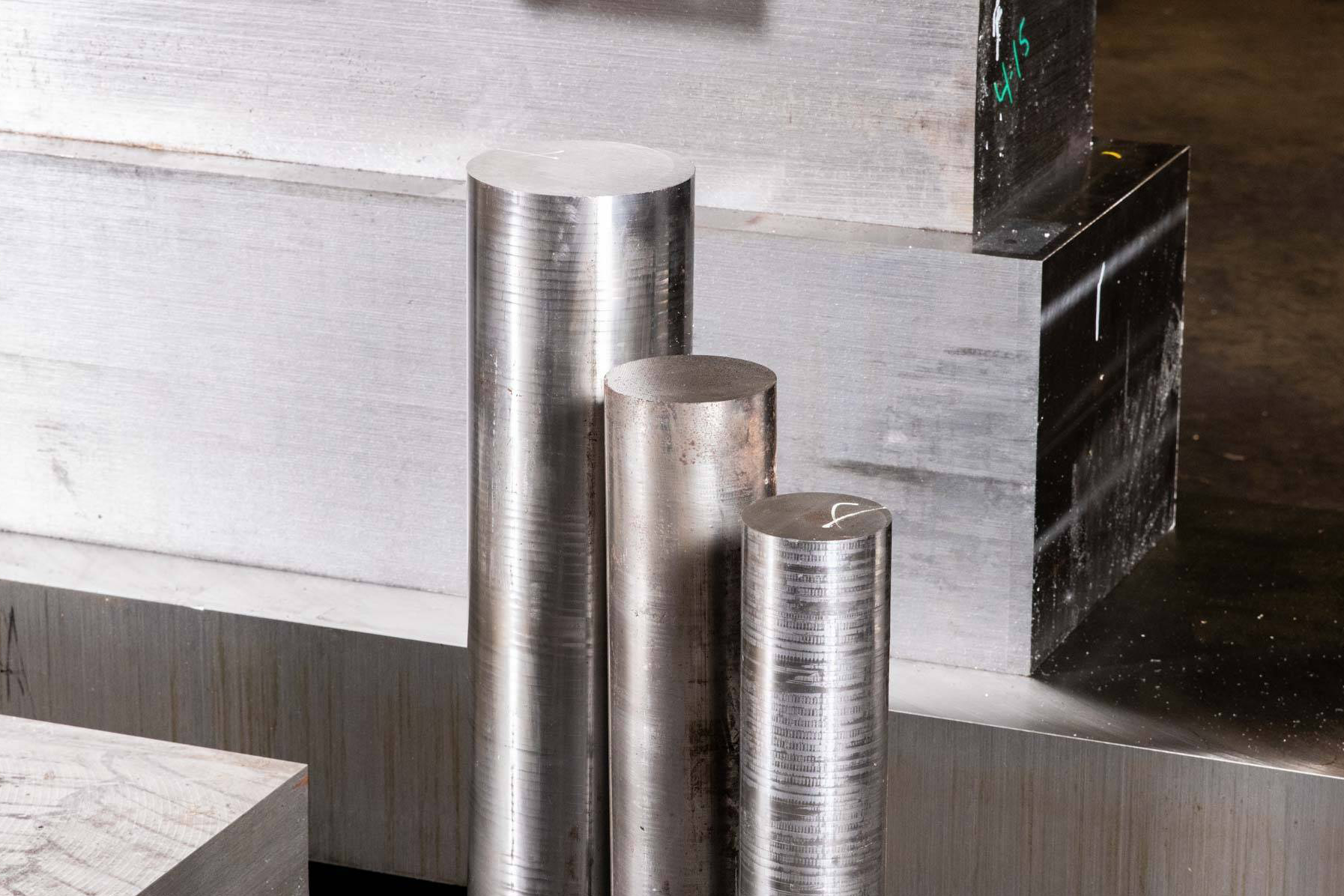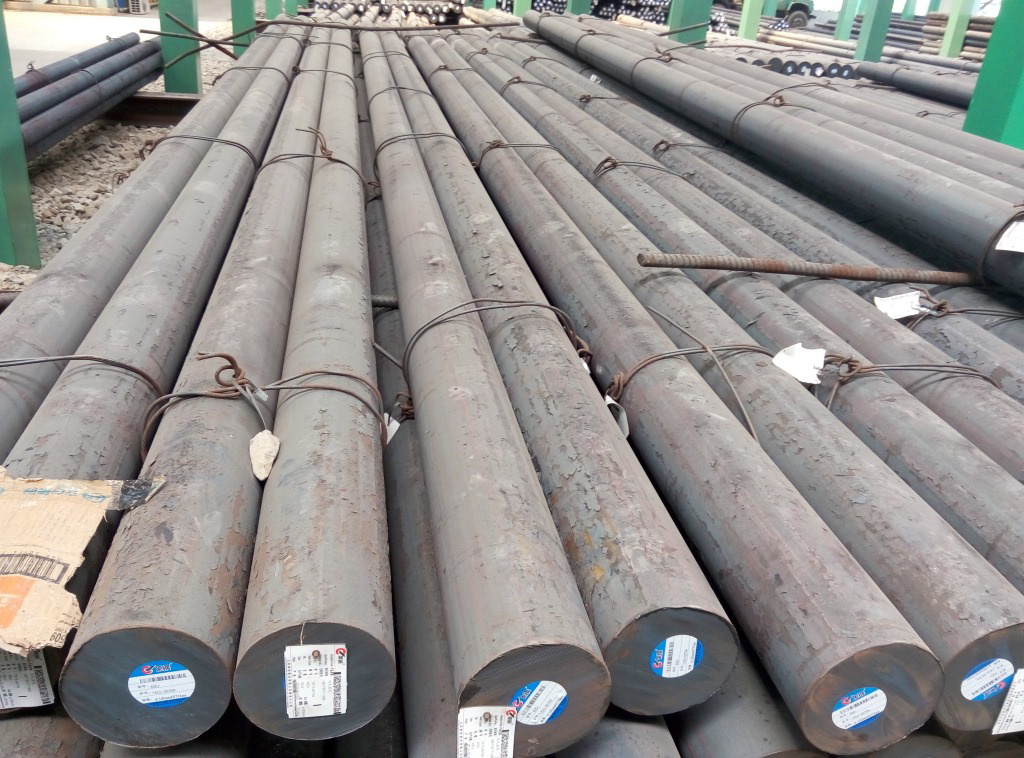Understanding 1.7709 Steel
What exactly is 1.7709 steel? Known by its European standard designation 21CrMoV5-7, this material is a quench and tempered alloy steel. It adheres strictly to the EN 10269-2006 standard. This standard specifically covers steels for fasteners used in elevated and low temperatures. Its core strength comes from alloy elements like Chromium (Cr), Molibdeno (Mo), and Vanadium (V). A controlled heat treatment process, known as quenching and tempering, optimizes its properties. It balances strength, ductility, and toughness effectively. The density of this alloy is 7.85 g/cm³. Companies widely use this material for critical fasteners like bolts and nuts. These are vital in energy, aerospace, and heavy industries. 1.7709 performs reliably up to 540°C.
Core Advantages of 1.7709
1.7709 steel delivers a vital combination of high tensile strength (700–1220 MPa) and excellent impact toughness (≥63J at room temperature). This holds true for sections up to 250 mm thick after heat treatment. This balance ensures component integrity under high loads.
For systems operating up to 540°C, 1.7709 maintains critical strength (≥350MPa). It forms a dense Cr₂O₃ oxide layer on its surface. This provides significant resistance to creep and oxidation. This is crucial for long-term performance in hot environments, often found in stainless steel piping systems.
Even in freezing conditions down to -40°C, 1.7709 retains significant impact strength (≥27J). This low-temperature toughness prevents brittle failure. It makes the material suitable for critical applications in diverse climates or cryogenic-adjacent systems connecting to stainless steel pipes.
Sourcing 1.7709 is easier when it works well in manufacturing. It offers good cold working properties with an annealed hardness below 197 HB. This suits precision machining and cold heading. While welding requires preheating (200–250∘C), using low-hydrogen electrodes avoids thermal cracking. This adaptability simplifies fabrication workflows.
Chemical Composition of 1.7709
| Elemento | C | Si | Minnesota | P | S | Cr | Mes | Ni | V | Cu |
|---|---|---|---|---|---|---|---|---|---|---|
| Contenido (%) | 0.17-0.23 | ≤0.40 | 0.40-0.70 | ≤0.025 | ≤0.015 | 1.20-1.50 | 0.60-0.80 | ≤0.30 | 0.10-0.20 | ≤0.30 |
Typical Applications: Where 1.7709 Fits
1.7709 steel is specified where failure is not an option. While not typically formed into pipes or standard fittings itself, its strength is indispensable for fasteners that connect high-performance stainless steel pipe and fitting systems.
- Energy & Power: High-temperature bolts and nuts made from 1.7709 are essential. They are used to connect components in gas turbines, supercritical steam systems and nuclear power plants. They can withstand temperatures up to 540°C and pressures up to 275 MPa. Important pipe connection fasteners in nuclear coolant environments.
- Heavy Machinery & Chemical Processing: 1.7709 bolts secure high-pressure reactors. They resist corrosion from sulfur and chlorine media. This reduces agrietamiento por corrosión bajo tensión risk. Components in boilers, like steam turbine rotors or connection bolts, handle significant thermal cycles and loads.
- Aerospace: Engine fasteners require extreme reliability. 1.7709 maintains high integrity under dynamic loads. It functions across a wide temperature range (from -50°C to 540°C). These fasteners are key in complex assemblies, including fuel or hydraulic lines where specialized stainless steel tubes are often used.
Qué hacemos
Heat Treatment and Processing for Quality
Suppliers must follow strict processes to achieve the required 1.7709 properties. The critical step is quench and tempering:
- Quenching: Heating to 910–940°C followed by oil quenching. This forms a hard martensitic structure.
- Tempering: High-temperature reheating at 650–720°C for at least two hours. This optimizes the strength-toughness balance.
Proper processing ensures uniform hardness (typically 325±5HB) and mechanical properties post-treatment. This validation guarantees a minimum tensile strength of 1010 MPa and a reduction of area of at least 62%. These metrics are vital for high-load fasteners.
For hot forming, starting temperatures are 1150–1200°C. Finishing must be above 850°C. This avoids forming brittle phases at grain boundaries. Cold working may need intermediate annealing. This prevents work hardening and ensures precise threading.
Contacto
- RM901 No.22 Tangjiaqiao Road Wenzhou China
- +86 577 8551 1171
- [email protected]
- https://www.kaysuns.com/



